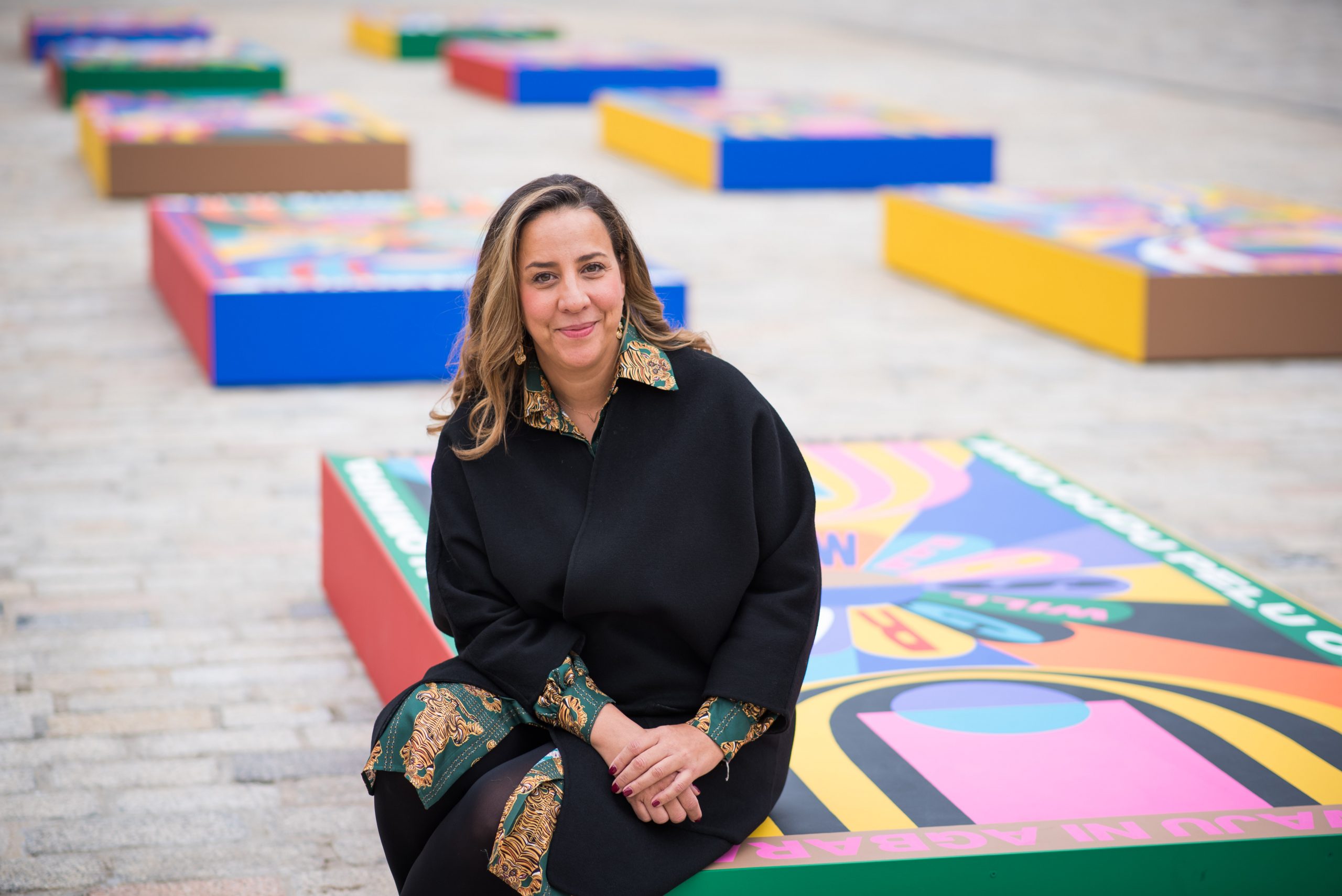
Marrakesh has a centuries-long history of attracting artists, makers, and writers, who are each drawn to the Moroccan city due to its vibrant and deep-rooted creative scene. Though it has long been on the map (Yves Saint Laurent and Pierre Bergé were among the famous part-time émigrés in the last century), in 2024, the capital is offering more platforms for discourse and social experiences than ever before.
The mainstay by now is the popular 1-54 Contemporary African Art Fair, which opens to VIPs this week, on February 8. The fair has expanded into two locations this year and will host 27 select galleries, including 14 from the African continent. The Moroccan art scene has been gaining further international attention thanks to the arrival of the fair, which was established in 2018; but it has been one pioneering event in a range of wider shifts as more commercial galleries, artist workshops, private spaces have been cropping up in recent years.
Restauranteur Kamal Laftimi grew up just off the central square Jemaa el-Fna in Marrakesh—he has spent his adult life creating dining experiences across the city that capture the essence of the historic square, based on his memories. Pétanque Social Club, his latest venture which saw him save what was a former a sports club venue from redevelopment, has attracted international praise from inside and outside the art world. The project was launched to tap into the thriving art community in the city, and it is often a watering hole for its power players. Attendees at its official unveiling included Yiman Erraziki, head of artistic programming at the Comptoir des Mines Galerie, collector Fatima Zohra Bennani Bennis, who is behind MCC Gallery, and artist Amine El Gotaibi.
Kamal Laftimi, courtesy DaDa
“The [art] scene has always existed, although it may have been more discreet and experimental,” Laftimi said over email. ”There were not many galleries and spaces previously, so artists acted as pioneers who opened up the path for a thriving art scene. The [Marrakesh] Biennale has also played a crucial role in drawing attention to Marrakesh as a vibrant hub for art and culture.”
Laftimi’s vision to offer a gathering site for the art world is well-timed, given that the 1-54 fair is continuing to grow in prominence. It is among a network of art-fueled spaces that tend to have open doors. “A lot of the artists who are based in Marrakesh have incredible studio spaces,” explained fair founder and director Touria El-Glaoui on a phone call. “The artists are often very open to receiving people who are visiting the city.” Their workspaces can be like “mini art spaces,” she says, and she recommends that people visiting the city seek out opportunities to visit artists on-site.
DaDa art space, 2023. Courtesy of Adnane Zemmama and 1-54 Contemporary African Art Fair.
Casablanca-born artist Amina Agueznay, who has an exhibition opening this week at DaDa art space, an independent multidisciplinary art venue that Laftimi opened in 2019, noted that Marrakesh is essential to igniting her creativity. Agueznay makes large installations in collaboration with artisans, combining her sculptural practice with the skills of traditional Moroccan makers.
The artist, who is represented by Loft Art Gallery, said new galleries are adding to the buzz, but that the key to the capital’s creative heart is the talented artisans working with traditional techniques. “We call our artisans ‘the treasures’ because they are truly artists,” she explained over the phone. “I always talk about these bridges between handicraft, art, and design, and architecture. Here, in Marrakesh, you can meet some real artisanal artists—and that’s exciting.”
1-54 Marrakech 2019 © Katrina Sorrentino
A major change in the city is the increase in the number of private art spaces and commercial galleries. In addition to DaDa art space, other locations, like LE18, which participated in Documenta 15, and MCC Gallery, which represents the artist and designer Louis Barthélemy, have opened in recent years. MCC’s rostered artist El Gotaibi took on the coveted Somerset House courtyard installation at London’s 1-54 art fair in 2023: Illuminate the Light (2023) saw the artist install 12 metal forms in which people could sit. They lit up as dusk fell. These galleries now accompany slightly older venues like Galerie 127 and Galerie SINIYA28.
Marrakesh’s art scene is, crucially, not only interested in fostering connections overseas; collaborations with other African centers are also in focus. Fondation Montresso, which opened in 2009, collaborates with 1-54 through the program In-Discipline, which promotes artists and conversation about art from the African continent; it has featured work from Benin, Ivory Coast, Congo, and Atlanta.
Moataz Nasr, The Mac Gate, (2019). Photo © Nicolas Brasseur. Courtesy of 1-54.
This year, the collaboration will be with Senegal and the foundation is planning to present “Mutations,” an exhibition featuring six Senegalese artists, including Arébénor Basséne, Aliou Diack, and Mbaye Babacar Diouf. After presenting at 1-54, the exhibition will transition to the foundation where it will remain on view until April 2024.
Estelle Guilié, artistic director at Montresso, thinks Marrakesh’s mix of being small and accessible, but international, is its key asset. “I think we started seeing a strong ecosystem coming together in Marrakech maybe six or seven years ago,” she said over the phone. “More people come with the intention of discovering art in Marrakesh because of the connection to the past and an eye on the future in an increased interest in art from Africa.”
More Trending Stories:
A Case for Enjoying ‘The Curse,’ Showtime’s Absurdist Take on Art and Media
Artist Ryan Trecartin Built His Career on the Internet. Now, He’s Decided It’s Pretty Boring
I Make Art With A.I. Here’s Why All Artists Need to Stop Worrying and Embrace the Technology
Sotheby’s Exec Paints an Ugly Picture of Yves Bouvier’s Deceptions in Ongoing Rybolovlev Trial
Loie Hollowell’s New Move From Abstraction to Realism Is Not a One-Way Journey